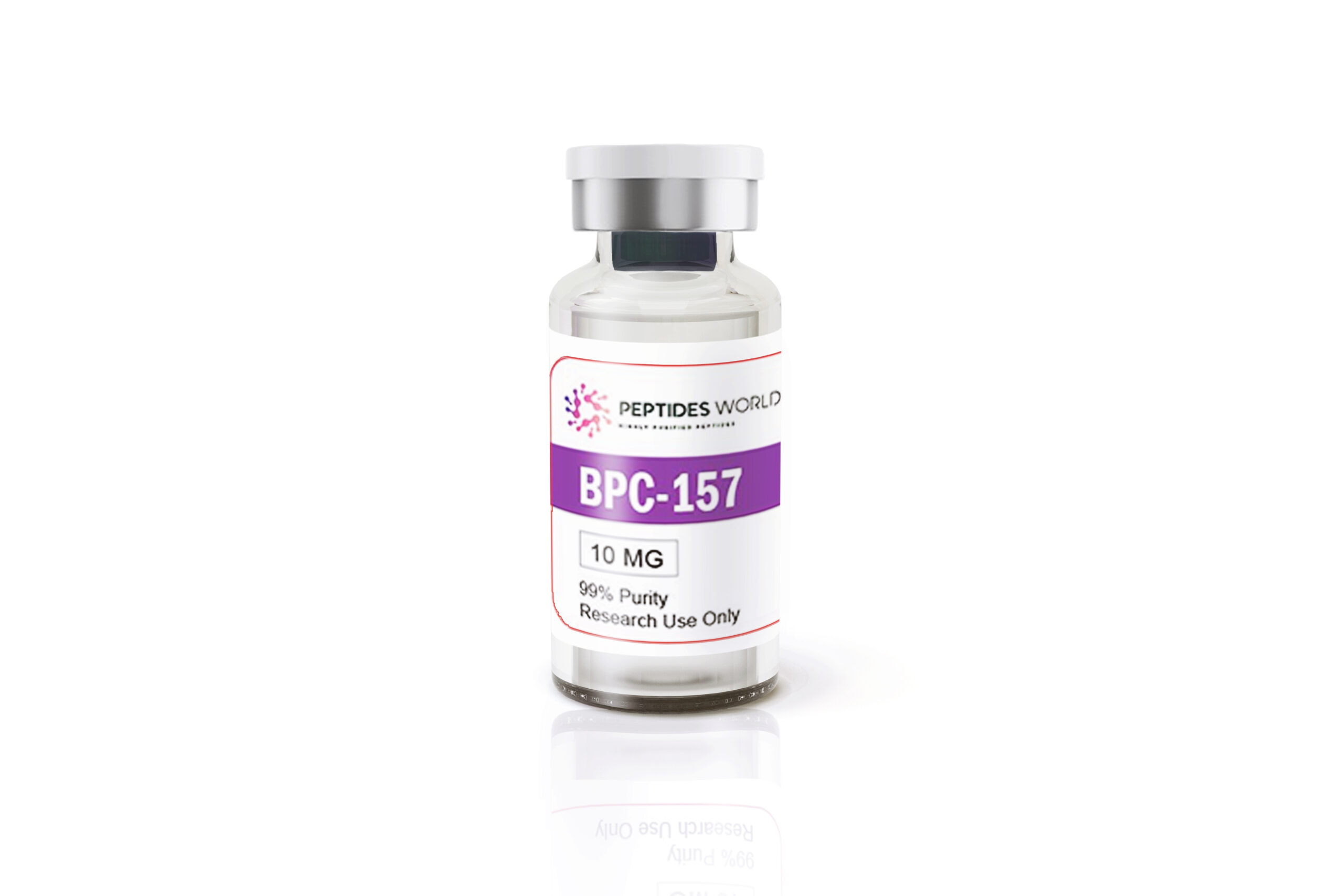
September 17, 2024
Brain-gut Axis And Pentadecapeptide Bpc 157: Academic And Functional Effects
Just How Bpc-157 Operate In The Body Generalized edema and congestion (a, b, c, d) with a raised number of karyopyknotic cells were found in the cerebral cortex (a, b) that was substantially different from the cortex area in BPC 157-treated rats (A, B). In control rats, intracerebral hemorrhage was discovered in infratentorial area (d), primarily in cerebellopontine angle/area (c) with generalised edema and congestion of main nervous system, while no hemorrhage (C) and only moderate edema was discovered in treated pets, mostly at 50 mmHg intra-abdominal stress (D). ( HE; magnifying × 200, range bar 100 μm (a, A, b, B, d, D); magnification × 100, scale bar 200 μm (c, C)). Body-protective compound (BPC) 157 shows safety effects against damages to different organs and tissues. For future scientific applications, we had formerly developed a solid-phase synthesis procedure for BPC157, confirmed its biological activity in different injury versions, and completed preclinical safety evaluations. This study intended to examine the pharmacokinetics, discharging, metabolic process, and circulation profiles of BPC157.Current Understanding On Non-steroidal Anti-inflammatory Drug-induced Small-bowel Damage: A Comprehensive Review
Otherwise, in rats with high intra-abdominal pressure, the application of BPC 157 had a significant restorative impact. For this effect, in all BPC 157-treated rats, the usual vital searching for may be the rapidly triggered azygos vein collateral pathway, which incorporated the substandard caval capillary and left superior caval vein, to reverse the fast discussion of this dangerous disorder. We disclosed that, regardless of completely boosted intra-abdominal high blood pressure (quality III and grade IV), a treacherous syndrome happened peripherally and centrally, the turnaround of the abdominal area syndrome caused by the steady stomach pentadecapeptide BPC 157 application was fairly constant. With sustained increased intra-abdominal pressures and pentadecapeptide BPC 157 application, otherwise impending abdominal area disorder (i.e., 25 mmHg or 30 mmHg, or 40 mmHg or 50 mmHg for 25, 30, and 60 minutes (thiopental) and for 120 min (esketamine)) did not show up. This was seen with the portal, caval, aortal, and premium sagittal sinus pressure analysis, decreased major ECG disturbances, virtually abrogated arterial and capillary apoplexy, and managed discussion of the mind, heart, lungs, liver, kidneys, and stomach system, without dangerous end results despite the long-term maintenance of high intra-abdominal pressure.Bpc 157 Peptide Bpc 157 Review, Side Effects, Dosage, Cycles, Before And After Results - Outlook India
Bpc 157 Peptide Bpc 157 Review, Side Effects, Dosage, Cycles, Before And After Results.
Posted: Tue, 08 Aug 2023 07:00:00 GMT [source]
Comparable To Does Bpc-157 Aid For Bodybuildingpdf
The pharmacokinetic specifications were computed utilizing the mean focus and Watson LIMS software application according to Functional recovery the non-atrioventricular design. Likely, BPC 157 exhibits some positive effects for esophagogastric anastomosis healing. Together, digestive tract anastomosis [10-14] and fistulas [15-20] healing, esophagitis and stomach sore recovery, alongside with rescued sphincter feature [10,11,17,18,20-25] might certainly enhance the possible medicinal peptides treatment for rat esophagogastric anastomosis. Until now, only to improve anastomosis healing, examined were keratinocyte growth factor-2 (KGF-2) (revealed to be ineffective provided intraperitoneally) [26] (regardless to therapeutic efficacy of a mutant of KGF-2 on trinitrobenzene sulfonic acid-induced rat design of Crohn's disease [27] and FGF-beta (efficient given topically [28]. In one research, it influenced Egr, Nos, Srf, Vegfr, Akt1, Plcɣ, and Kras genetics expression in the vessel that offers an alternate operating pathway (i.e., the left ovarian capillary as the key for infrarenal occlusion-induced substandard vena cava syndrome in rats) (Vukojevic et al., 2018). In the hippocampus, BPC 157 highly boosts Egr1, Akt1, Kras, Src, Foxo, Srf, Vegfr2, Nos3, and Nos1 expression and lowers Nos2 and Nfkb expression; these modifications may show exactly how BPC 157 exerts its effects (Vukojevic et al., 2020). Furthermore, reduced leaking intestine disorder recommends that BPC 157 is a stabilizer of mobile junctions by raising limited joint healthy protein ZO-1 expression and transepithelial resistance (Park et al., 2020). A decrease in the mRNA degree of inflammatory mediators (iNOS, IL-6, IFN-γ, and TNF-α) and enhanced expression of HSP 70 and 90 and antioxidant healthy proteins such as HO-1, NQO-1, glutathione reductase, glutathione peroxidase 2, and GST-pi were observed (Park et al., 2020). These findings clearly show that BPC 157 may successfully take on the preliminary events in intra-abdominal high blood pressure (i.e., considerable damages to the digestive tract epithelium and extension of digestive tract limited junctions, boosted mucosal barrier leaks in the structure, bacterial translocation, and sepsis (Gong et al., 2009)).- Based on a well-known sensation in outer nerve injury (i.e., as the number of maintained motoneurons decreases, the MUP (giant capacity) in the tail muscular tissue increases), it is imaginable that the BPC 157-treated rats that underwent spinal cord injury and were subjected to EMG recordings showed a markedly lower MUP in the tail muscle than that in the corresponding controls (Table 3).
- BPC 157, a peptide, is part of the series of human stomach juice protein BPC, and it is openly soluble in water at pH 7.0 and saline.
- To speed up anastomosis recovery, a number of research studies implicate the positive result of the caused angiogenesis that complies with partial devascularization of the stomach after a certain period (i.e., two-week duration) [34-37]
Is BPC 157 naturally happening?
BPC-157, or Body Protecting Compound 157 is a naturally-occurring peptide made from 15 amino acids derived from human gastric juices. Doctor, consisting of physicians at the prestigious Cleveland Center, have actually been using BPC-157 peptide therapy to help their people for several years.
Social Links